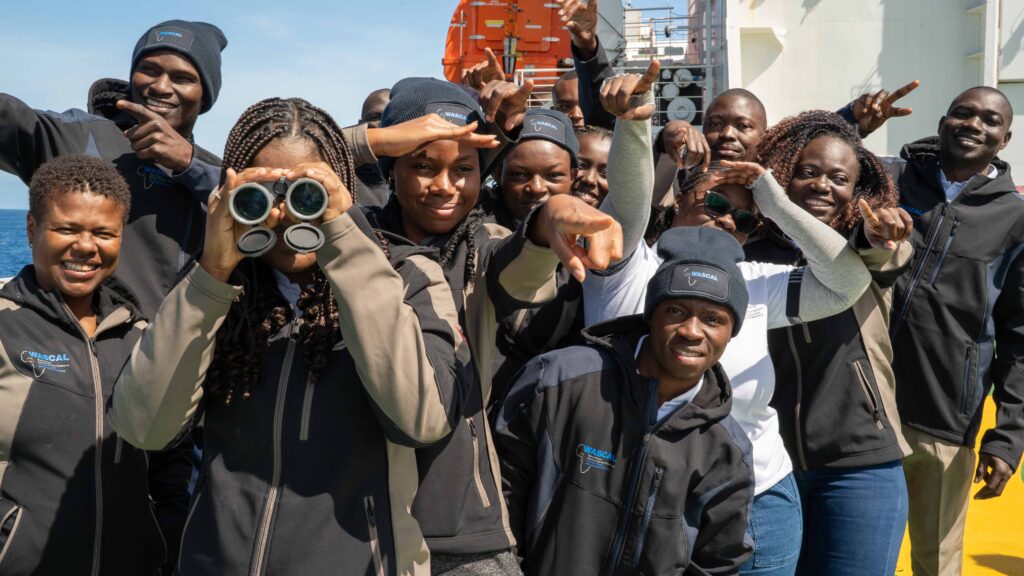I’m a dreamer. One of those who believe that life makes sense when lived with intensity, emotion and a touch of adrenaline. Ever since I was a child, I’ve always wanted to discover the world, travel to unknown places and, above all, do science that could transform realities. When the opportunity arose to embark on the POLARSTERN through the WASCAL programme, I knew it was fate calling me to one of the most incredible adventures of my life.
I was anxious in the days leading up to the expedition, imagining what it would be like to be on board that steel giant, a veritable floating palace of science. But when I finally saw the POLARSTERN anchored in Porto Grande Bay, in São Vicente, something changed inside me. Anxiety gave way to a courage I didn’t even know existed. There, with my pockets full of dreams and my heart beating fast, I took the first step towards a journey that will remain in my memory forever.
The Magic of Doing Science on the Ocean
On board, we were greeted by warm smiles from the crew, and within a few days, the ship already felt like a second home. The instructors, experts in various fields, divided our time into practical modules, where we dived headfirst into the world of oceanography. It was there, among microscopes and water samples, that I discovered the beauty hidden in the ocean.
We used state-of-the-art technology to collect samples and analyse them. Each piece of data collected was like a piece of a giant jigsaw puzzle, helping us to understand how climate change is transforming the Atlantic Ocean. And the most incredible thing? Knowing that this information wouldn’t just remain in the reports, but would be used to protect coastal communities, including my own. Multibeam echosounders allowed us to ‘see’ through the water column, revealing not only the topography of the seabed, but also the distribution of organisms at different depths. The CTD rosettes, with their precise sensors, provided us with crucial data on temperature, salinity, oxygen and other physical properties of the water.
It was particularly fascinating to learn that hydroacoustics can be used to assess fish stocks. Scientific echosounders, which emit sound pulses and analyse their echoes, can identify shoals based on their acoustic signatures. This technology has transformative potential for São Vicente, where fishing is vital for the local economy and food security. In São Vicente we could monitor in real time the movements of shoals of tuna and other commercial species and alert fishermen to places where stocks are recovering or declining.
This experience wasn’t just about living an adventure; it was about creating tools to change the world. What’s more, living at sea has shown me the power of collaboration. We worked side by side with scientists from different countries, proving that science has no borders. This network of contacts now allows me to seek partnerships for local projects, bringing global solutions to the challenges of my region.
The Legacy of the Expedition: Courage to Move Forward
Today, when I look back, I see that the POLARSTERN was not just a ship, but a gateway to the future. It taught me that science is not only done in laboratories, but in the movement of the waves, in the glow of plankton under the microscope and in teamwork under a starry sky in the middle of the Atlantic.
And the most important thing? It showed me that dreams are not just to be lived, but to be transformed into action. Now, with the tools I’ve acquired and the passion that has only grown, I’m ready to make a difference – starting with my community, but reaching out to the world.
Because the sea doesn’t separate, it connects. And science, when done with heart, can save the planet.
Débora Da Luz Coelho
